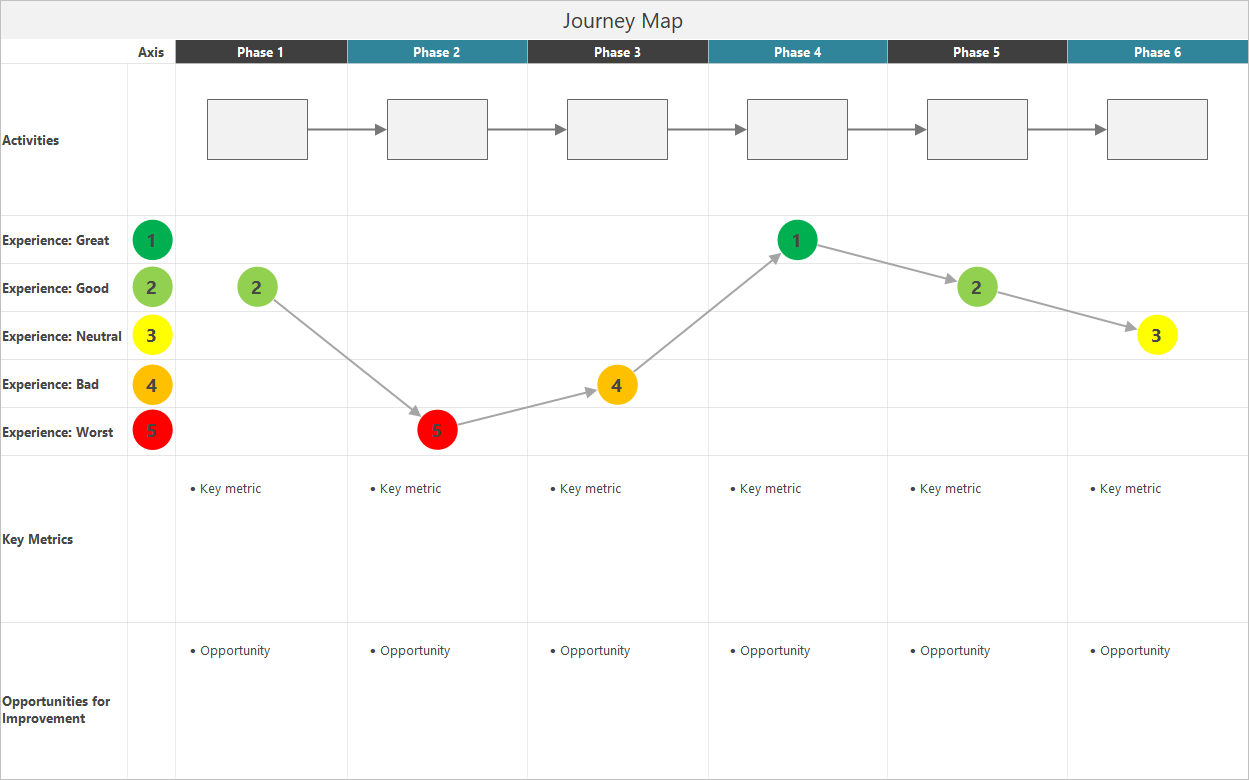Use a Journey Map to
illustrate the steps needed to complete a task.
Journey maps help you visualize, at a high level, the activities and experiences involved in
completing a task or a process so you can identify opportunities for improvement. For example,
a Human Resources department might use a Journey Map to improve the on-boarding experience for
new hires. An airline might use a Journey Map to improve the baggage claim experience for
travelers. 

A journey map answers the following questions.
- What activities occur at each phase?
- What was the user’s experience like at each phase? Was it positive or negative? Which moments had the most impact on the user’s emotions?
- What metrics are used to evaluate the user experience at each phase?
- What are opportunities for improvement?
How-to
- Enter the activity to accomplish at each phase. Enter as many touch-points as possible.
- Rate the user experience between 1 and 5, where 5 is the most positive (accomplished, proud) and 1 is the least positive (angry, frustrated).
- List the metrics used to evaluate the experience at each phase. For example, you might measure the time spent on the activity or whether the user succeeded or failed to complete the activity.
- Identify the opportunities for improvement at each phase.
For more information, go to Add a map.
